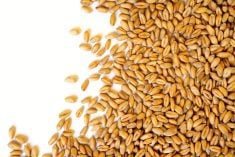Venkata Vakulabharanam has a message for growers who think flax doesn’t compare favourably to other crops.
“I would say, ‘think again,’ ” Saskatchewan Agriculture’s oilseed specialist told delegates attending the flax portion of Crop Production Week.
Using numbers provided by agricultural consultant Kevin Hursh, Vakulabharanam showed growers that flax was one of the most profitable crops to grow in Saskatchewan in 2012, outperforming canola by $39 per acre.
Fellow panelist Shane Stokke, a producer from Watrous, Sask, agreed.
Flax delivered a net profit on h is farm before fixed costs of $280.04 per acre compared to $237.48 for canola.
Read Also

Canadian trade data delayed by U.S. government shutdown
Canadian international trade data for September will be delayed indefinitely due to the ongoing partial shutdown of the United States government, Statistics Canada said Friday, Oct. 24.
His flax crop averaged 28 bushels per acre while canola averaged 32 bu. per acres. The calculation was based on a price of $14.50 per bu. for flax and $13.50 for canola.
“Flax is the highest net profit crop that I can grow, and it really does suit our farm very well,” said Stokke.
It’s not just a one-year anomaly, he added.
“Eight out of 10 years our flax will outdo our canola.”
Stokke said it boils down to the lower input costs required to grow flax.
Vakulabharanam said flax also survives hailstorms better than other crops and is ideal for breaking the disease cycle because flax is not susceptible to the same yield-limiting diseases as canola and pulses.
Stokke said producers usually factor in an average yield of 20 to 21 bu. per acre for flax, which is not the case on his farm.
“If I see anything less than 25 I’m dissatisfied, something happened. Twenty-eight is what I usually budget,” he said.
Stokke provided tips for achieving better flax yields on the farm:
• Seed early: Many growers leave flax until the end, but Stokke said he has had success seeding flax after his canola, around May 15.
• Seed shallow: Stokke says planting 13 millimetres deep works best on his farm.
• Watch out for fertilizer burn: This is one of Stokke’s biggest concerns, so he limits the amount of phosphorus he applies to the crop.
• Plant on clean fields: Flax doesn’t compete well with weeds, although Authority has helped.
• Headline fungicide is a must: Stokke says the difference between crop treated with the fungicide and crop left untreated is stark.















